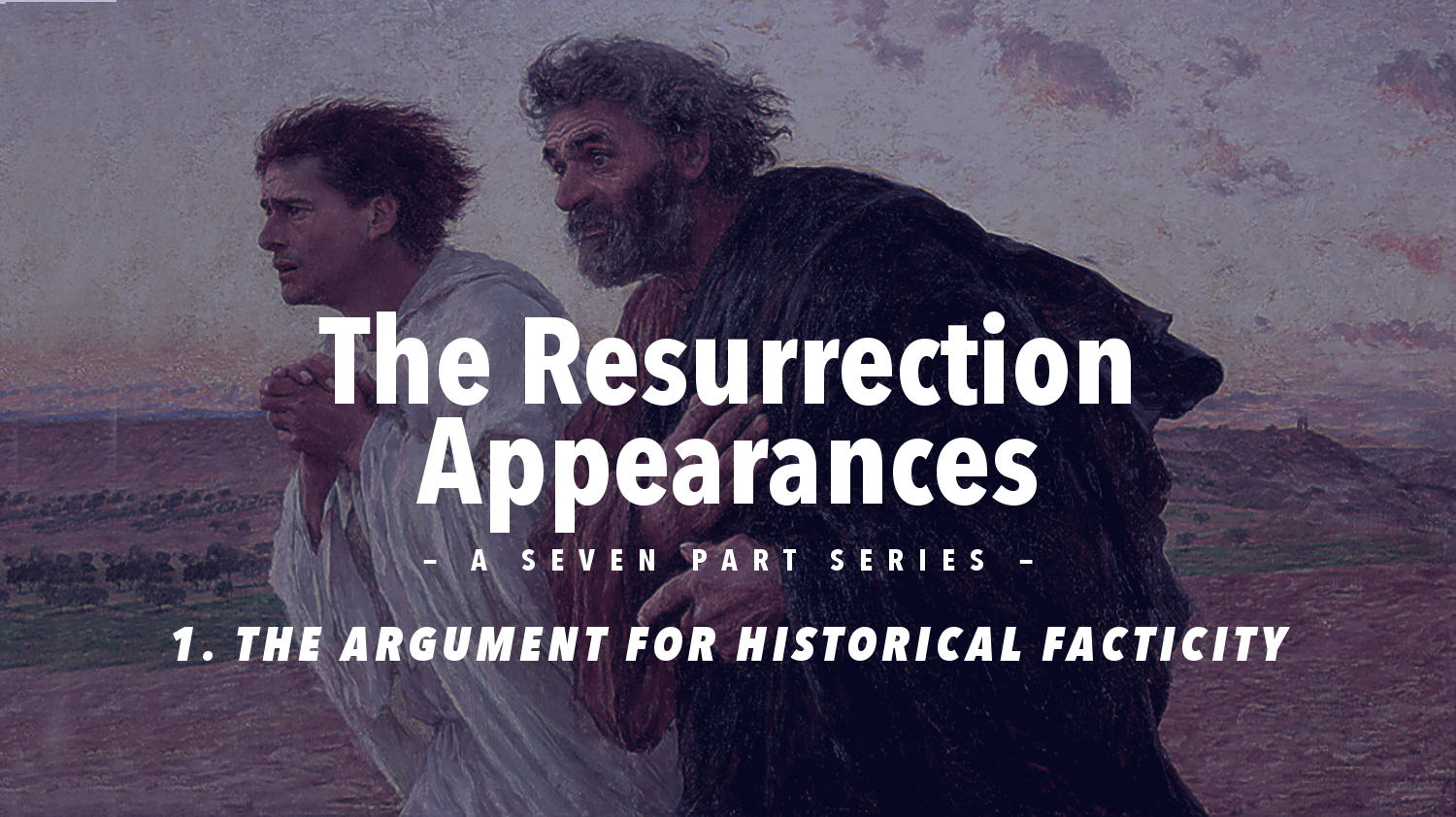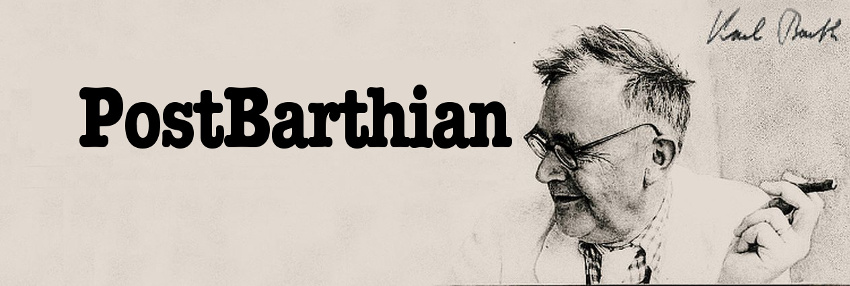
The Resurrection Appearances: A Seven Part Series
Part 1. The Argument For Historical Facticity
Is the resurrection of Jesus Christ a historical fact? In a fascinating and illuminating section of Wolfhart's Pannenberg's Systematic Theology, Vol. 2, he critically examines the New Testament witness regarding the resurrection appearances of Jesus and the reports of the empty tomb, to answer this provocative question. In this seven part series, I will first present Pannenberg's test for historical facticity of the resurrection of Jesus, and then in subsequent parts of the series apply it to the empty tomb reports, the women at the tomb, Paul's vision on the road to Damascus, and the other resurrection appearances in the New Testament witness.
Was the resurrection of Jesus a verifiable event in history?
Many theologians consider the resurrection of Jesus to be supra-historical event, similar to the Original Creation (Gen 1-2), and therefore it is inaccessible to historical verification. For instance, Karl Barth said that the New Testament shouldn't be "used to prove the historicity of the resurrection" because "unquestionably, the resurrection narratives are contradictory. A coherent history cannot be evolved from them" and also because "the witnesses attended an event that went over their heads, and each told a bit of it. But these scraps are sufficient to bear witness to us of the magnitude of the event and its historicity."[1] So for Barth, and many other theologians, any attempt to prove that the resurrection of Jesus was a fact of history, is a misunderstanding of the nature of the resurrection of Jesus or the New Testament witnesses of this event.
Theologians who have attempted to prove the resurrection of Jesus, are typically associated with Christian Apologetics, Christian Sciences and other forms of Christian Fundamentalism, so theologians who attempt to prove the resurrection, often get stigmatized for being like these groups. Nevertheless, Pannenberg is willing to carry out a modified form of apologetics—a theology from below—to answer this controversial question of historical facticity. Pannenberg ultimately decides that the resurrection may be established as historical fact based upon critical examination of the resurrection appearances of Jesus in the New Testament witnesses, but not upon the empty tomb reports (similar to Karl Barth).
The Argument for Historical Facticity
Under what basis, may the resurrection of Jesus Christ be proven to be a fact of history? Wolfhart Pannenberg begins by saying that "the primitive Christian testimonies to the appearances of the risen Lord . . . along with the discovery of the empty tomb of Jesus" may not be accepted as facts "blindly on mere authority" (or purely because the Bible says so), and so we "must see whether they hold up to the kind of testing to which we submit, and by which we prove, other reported facts." [2] Pannenberg's method should not be confused with Charles Hodge, who read the Bible as a "storehouse of facts" that are above criticism (such as in Biblical Inerrancy). Pannenberg is willing to engage in material criticism (sachkritik) to determine whether the New Testaments witnesses are true, and he does not accept the New Testament witnesses as true based upon their own authority alone. Pannenberg is willing to use the Bible to criticize the Bible, in order to defeat errors it at times justifies (such as patriarchy). Pannenberg believes that by subjecting the resurrection appearances to a test for historical facticity, the resurrection of Jesus may be verified.
Pannenberg's Test for Historical Facticity
Pannenberg defines his test to determine if the resurrection of Jesus is a fact of history in his Systematic Theology, Vol. 2 section 10.1.7 [3], which I've summarized in this following list:
- Determine that an event is a fact of history "simply involves the fact that it happened at a specific time."
- An event may be a fact of history, even if there are no other events like it in history—it may be a unique occurrence.
- The resurrection of Jesus may not be denied historical facticity because this event has never occurred beforehand or afterwards (1 cor 15:13).
- The question whether this event is like other events may play a role in critical evaluation.
- The "otherness of the eschatological reality of the resurrection" does not exclude the resurrection of Jesus from being a historical fact.
- The resurrection as a historical fact, means this event has theological significance and actuality "in this world and history of ours."
- An event may be declared a historical fact, and continue to be doubted, disputed and debated.
- Many historical facts may be debated, but these ongoing debates do not preclude any event from being consider a historical fact.
- All Christians must realize that the historical facticity of the resurrection will continue to be contested until the eschatological consummation of the world (i.e. at the final coming of Jesus).
- A theological statement about a past event, unavoidably involves a historical claim, involving a statement of facticity.
- Determining the historical facticity involves examining the individual data and reconstructing the original event, as well as the possible and impossible reality that stands behind that event.
- Verification requires awareness of our common understanding, from which we analyze the past, and being conscious that our understanding of reality (and consequently past realities), has changed over time. [3]
Conclusion
Now that I've summarized Pannenberg's test for historical facticity, as a prolegomena in this seven part series, in the subsequent parts, I will use Pannenberg's test to consider whether the resurrection appearances establish the resurrection of Jesus as a historical fact, by examining a selection of the resurrection appearances from the New Testament witness, and providing commentary on Pannenberg's critical evaluations of those loci.
The Resurrection Appearances series:
- The Resurrection Appearances: 1. The Argument for Historical Facticity
- The Resurrection Appearances: 2. Eyewitnesses, Visions or Hallucinations?
- The Resurrection Appearances: 3. Faith in the Empty Tomb is an Empty Faith
- The Resurrection Appearances: 4. The Third Day: A Theological Symbol or a Historical Date and Time?
- The Resurrection Appearances: The Oldest Resurrection Accounts in the New Testament (Part 5)
- Coming soon . . .
Sources:
1. Barth, Karl. Ed. Jean-Louis Leuba. The Faith of the Church: A Commentary on the Apostle's Creed According to Calvin's Catechism. Trans. Gabriel Vahanian. New York: Meridian, 1963. 108. Print.
2. Pannenberg, Wolfhart. Systematic Theology (Volume 2). trans. Geoffrey W. Bromiley, Wm. B. Eerdmans Publishing Co., 2001. Print. 353.
3. Ibid. 360-2.
4. Header Image Background: By Eugène Burnand - Own work, Public Domain, Link



September 16th, 2017 - 19:31
In IV/2 KB makes clear that the resurrection occurred within time and the post-resurrection body of Jesus could be touched and handled. The real question for him is epistemological–whether it can be proved to have happened by the canons of historical criticism, especially for those still functioning in the categories of Troeltsch.
September 16th, 2017 - 19:49
Thats good point to clarify about Barth. I may touch on barth vs Bultmann later in the series.
October 10th, 2017 - 13:25
marty fox:
Jesus was still in the flesh after His ressurection
http://bibleforums.org/showthread.php/272390-Revisiting-Luke-17?p=3409400&posted=1#post3409400#77
GE:
Acts 2:27,31; 13:35,37 Psalms 16:10 1Corinthians 15:53 1Peter 1:18-25 Psalms 49:14,15 Isaiah 38:16-22 Romans 8:34
Jesus was still in the flesh after his Resurrection as before his Resurrection “also my flesh shall (have) rested in hope”—the same flesh of his human body which He Suffered and was Crucified and Died and was Buried and Resurrected in and with and through and forevermore shall be in and with and through.
February 8th, 2021 - 12:19
Not sure how this is a *test* for historical facticity when the point seems to be to draw parameters
Determine that an event is a fact of history “simply involves the fact that it happened at a specific time.
But we don’t have this information. Indeed, the “fact that it happened” is a bit circular when you’re trying to
show that very thing.
> The resurrection of Jesus may not be denied historical facticity because this event has never occurred beforehand or afterwards
There’s no reason to accept facticity or more specifically that the resurrection happened *ever*. The idea that
it “never occurred beforehand or afterwards” likewise assumes historicity while testing for it
> The question whether this event is like other events may play a role in critical evaluation.
How? Again this is circular. In fact, one would have to say that Pannenberg’s test is for the ability to make and ignore bad arguments